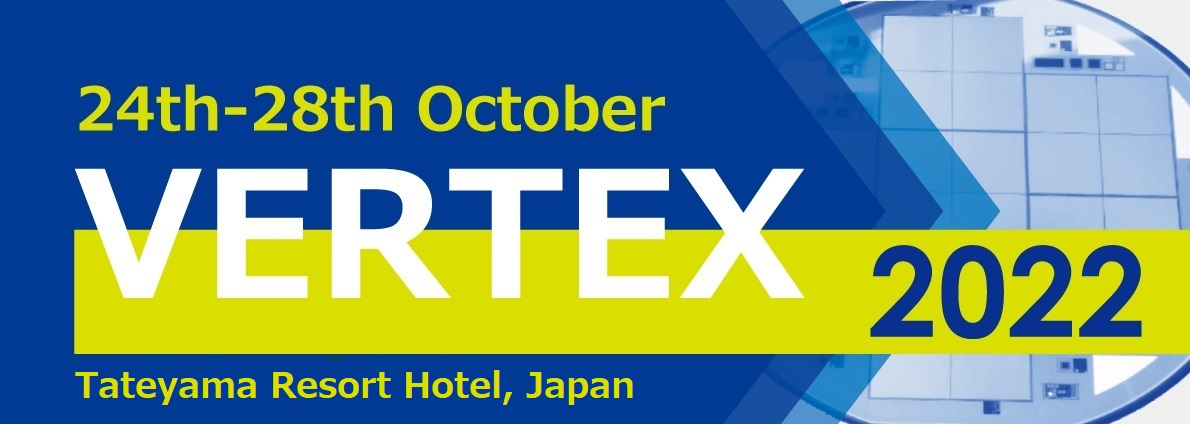Conveners
Timing Detector: (1)
- Koji Nakamura (High Energy Accelerator Research Organization (JP))
Timing Detector: (2)
- Koji Nakamura (High Energy Accelerator Research Organization (JP))
The increase of the particle flux at the HL-LHC with instantaneous luminosities up to L ≃ 7.5 × $10^{34}$ cm$^{−2}$s$^{−1}$ will have a severe impact on the ATLAS detector performance. The forward region where the liquid Argon calorimeter has coarser granularity and the inner tracker has poorer momentum resolution will be particularly affected. A High Granularity Timing Detector (HGTD) will be...
The significant increase of pileup interactions is one of the main experimental challenges for ATLAS detector physics program during the High Luminosity (HL) LHC operation phase. The nominal operation scenario expects to have an average of 200 simultaneous proton-proton interactions (〈μ〉 = 200) in each bunch crossing. The reconstruction and trigger performance for physics objects will be...
LHCb has recently submitted a physics case for an Upgrade II detector to begin operation in 2031. The upcoming upgrade stage is designed to run at instantaneous luminosities of up to $1.5 \times 10^{34} cm^{-2}s^{-1}$, and accumulate a sample of more than 300 fb$^{-1}$. At this intensity, the mean number of interactions per crossing would be 42, producing around 2000 charged particles within...
Timepix4 is the latest generation in the Timepix family of ASICs. It has a pixel matrix of 512 by 448 pixels with a size of 55 by 55 μm, where each individual pixel measures the arrival time of the hits via leading edge discrimination. The TDC is constructed of four phase-shifted 640 MHz clocks to achieve a time bin size of 195 ps and a nominal time resolution of 60 ps. Besides the time of...
The recently emerged Low Gain Avalanche Diode (LGAD) sensor technology is optimized to measure single particles with an excellent timing precision and with a high spatial granularity. These properties, paired with a low material budget and a high radiation hardness, make LGADs viable candidates not only for 4D particle tracking, for example in high energy physics experiments and medical...
In this contribution, I will review the performance improvements that two design innovations, low-gain (LGAD) and resistive read-out (RSD), have brought to silicon sensors. Large signals lead to improved temporal precision (~ 30 ps), while charge sharing allows for achieving excellent spatial resolution (20 microns) with large pixels (~ 1 x1 mm2). LGAD- and RSD- based silicon sensors are now...
Several anomalies have recently emerged in high energy physics experiments leading us to believe that discoveries are at reach in the next generation of collider physics experiments, however, for their success, technological advances are critical. Among them, 4-dimensional (4D) detectors that provide high-resolution space and time measurements in a single device are in growing demand, and will...
Low-Gain Avalanche Diode (LGAD) sensor is one of candidate sensors for tracker at future hadron collider. To use this sensor as tracking detector, AC-LGAD sensor was developed which has both timing and spatial resolution. In high luminosity environment, a 30ps of timing resolution and O(10um) spatial resolution helps to reduce pileup effect and reconstruct tracks precisely. By optimization...
In this work the results of Technology-CAD (TCAD) device-level simulations of non-irradiated and irradiated Low-Gain Avalanche Diode (LGAD) detectors will be presented. Since LGADs are becoming one of the most promising devices for high performance particle detector in harsh radiation environments, it is of the utmost importance to have a predictive insight into their electrical behavior and...
The TimeSPOT project has developed fast sensors and electronics for the readout of radiation-hard 4D pixels for vertex detectors of the next generation of experiments at colliders. In this paper, results about 3D silicon sensors, fabricated according to a so-called 3D-trench geometry, are illustrated. 3D-trench sensors have shown an intrinsic time resolution around 10 ps even after an...
The MONOLITH ERC Advanced project aims at producing a monolithic silicon pixel ASIC with 50µm pixel pitch and picosecond-level time stamping. The two main ingredients are low-noise, fast SiGe BiCMOS electronics and a novel sensor concept, the Picosecond Avalanche Detector (PicoAD). The PicoAD uses a multi-PN junction to engineer the electric field and produce a continuous gain layer deep in...
